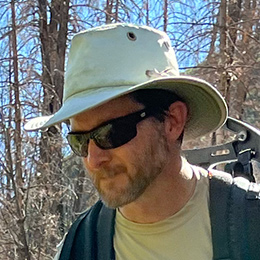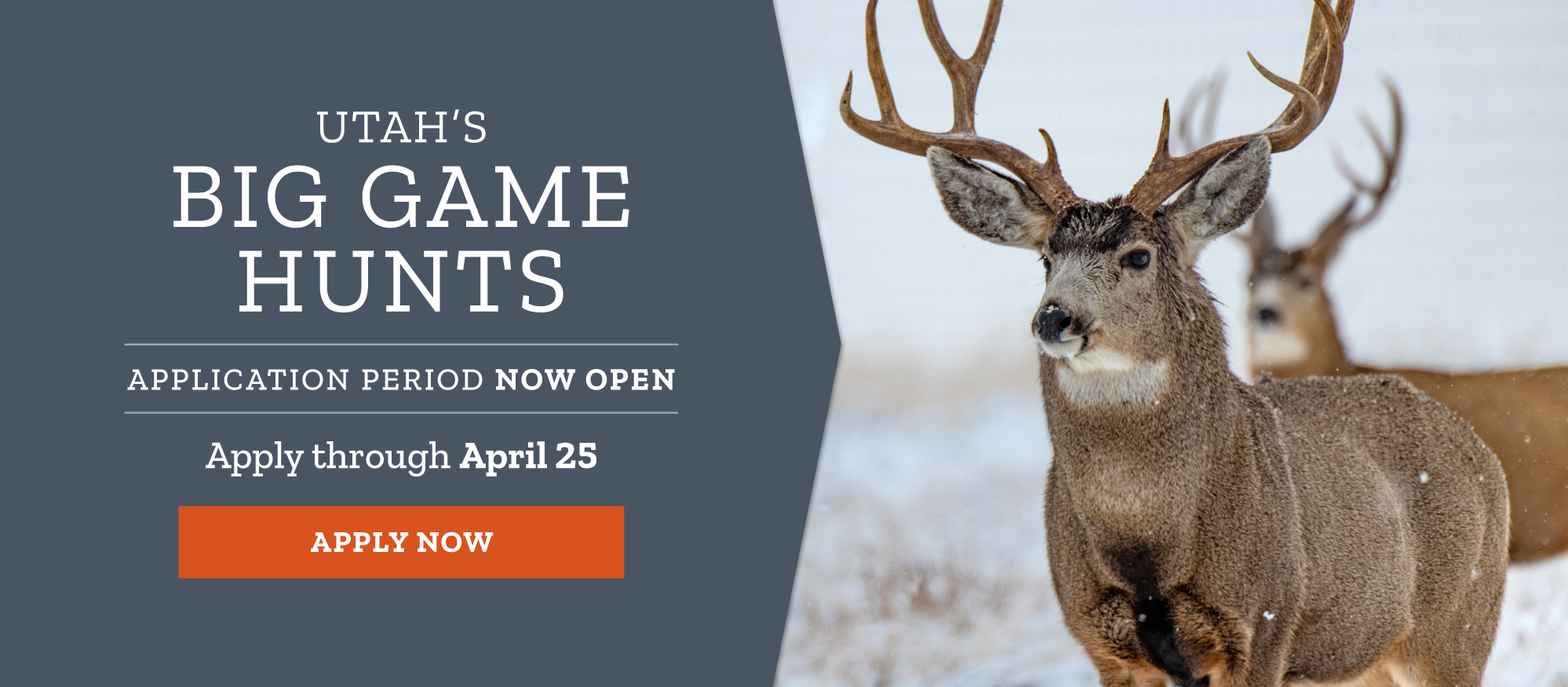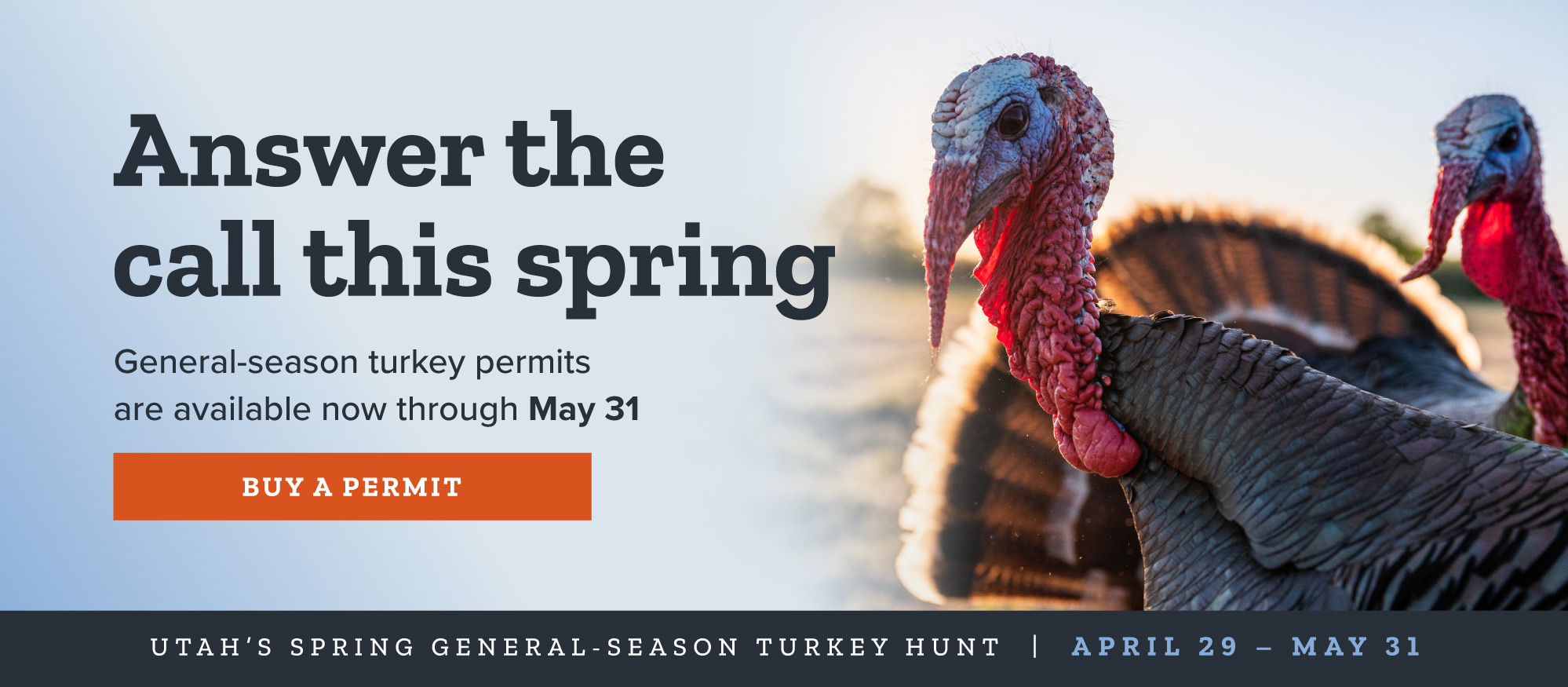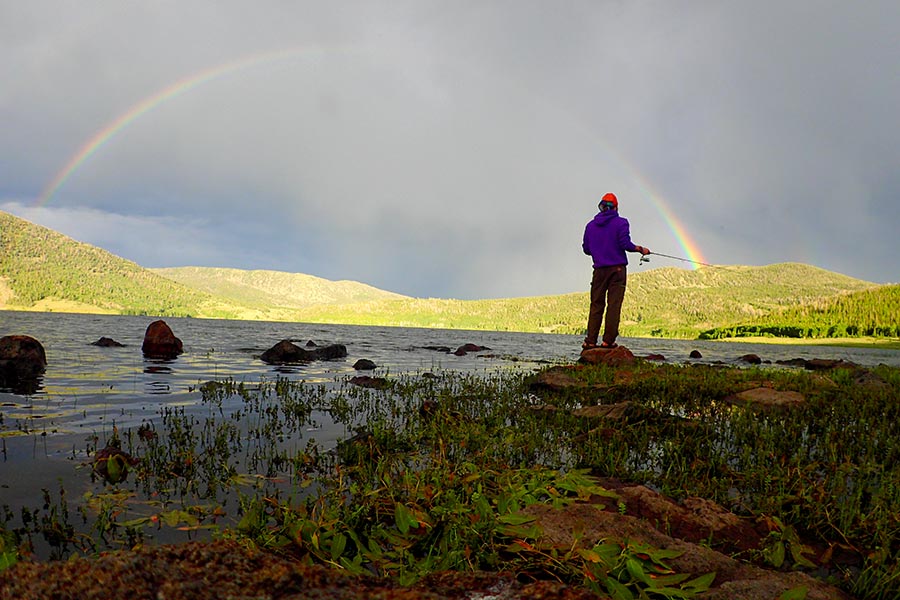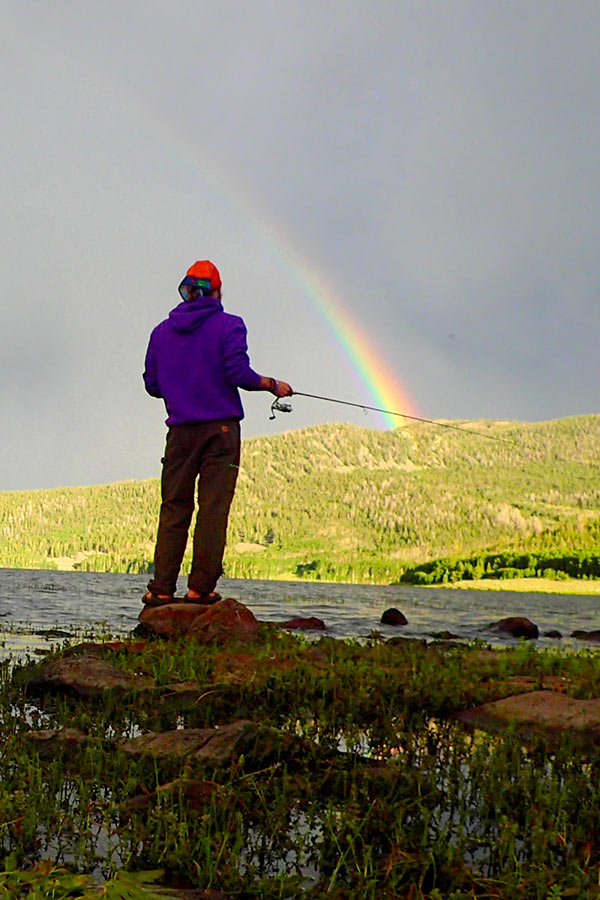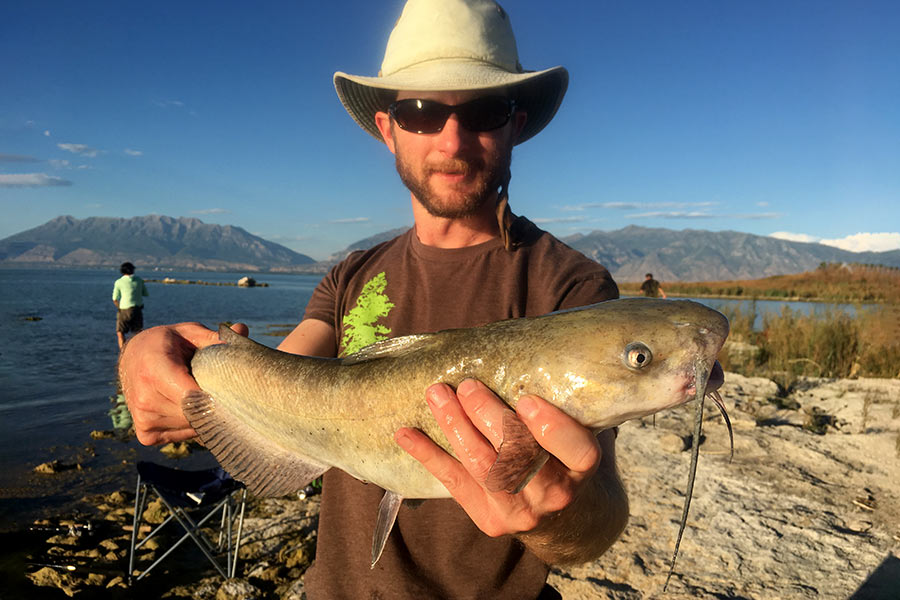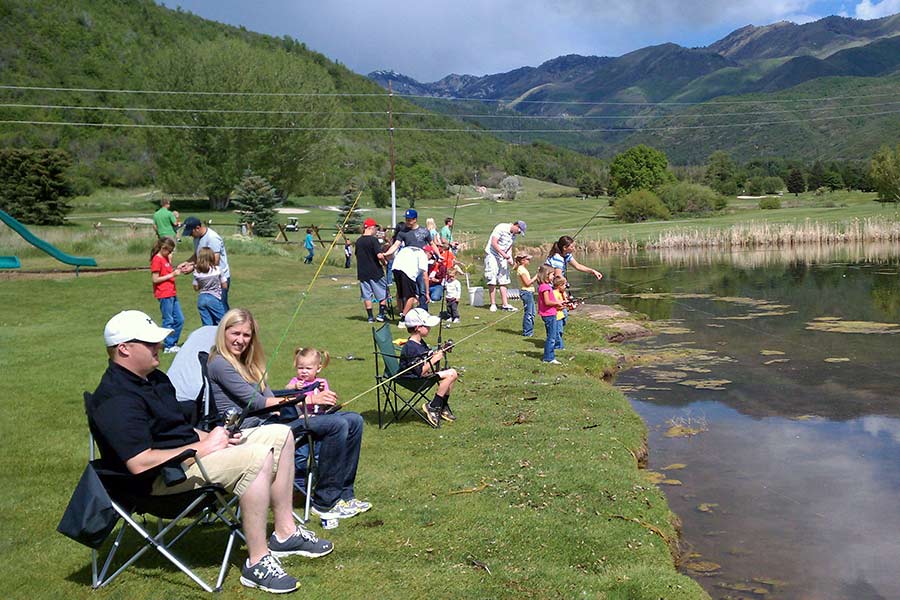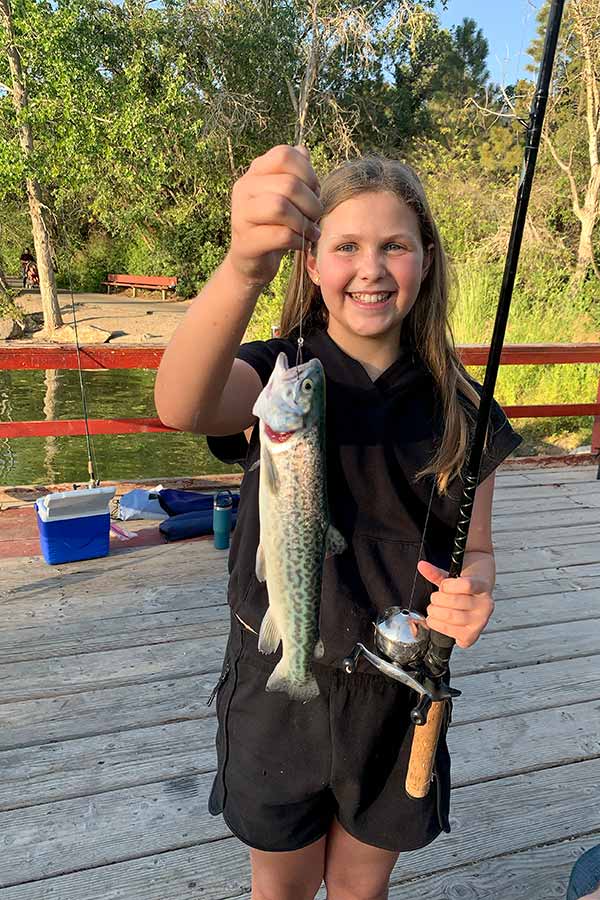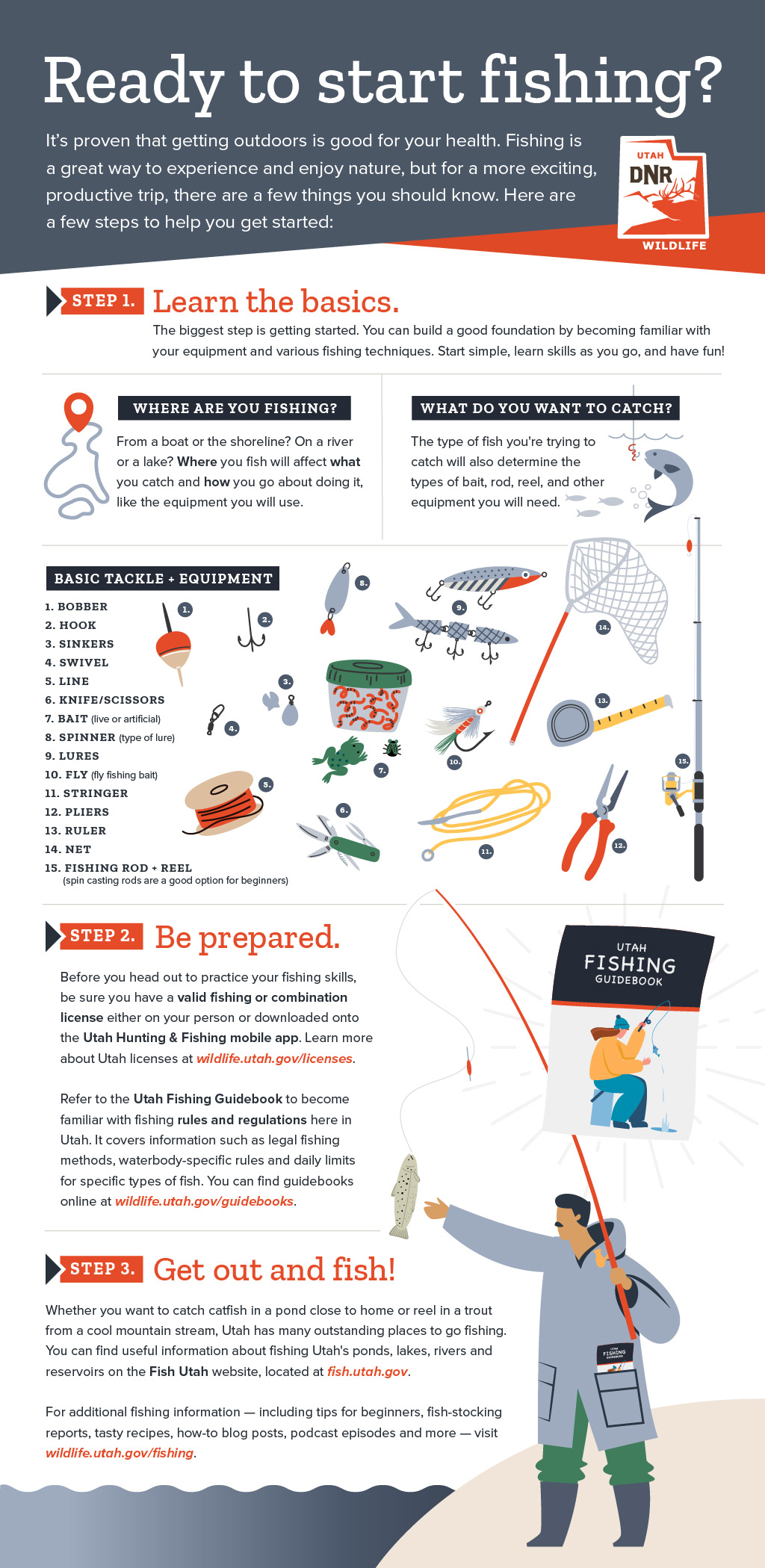Learn to fish: planning ahead for success
Figuring out where to go fishing and which fish to target
Chris Crockett
Central Region Aquatics Manager
There's no wrong way to plan for a fishing trip, but there are lots of good ways to get started. Some anglers collect the most basic information and then head out to explore. Others like to spend a significant amount of time researching their trip to determine the best location, prime species, popular lures, etc. Both approaches have their merits, and in my opinion the right approach falls somewhere in the middle.
Most importantly, don't let uncertainty prevent you from making a trip outdoors. Some of my best days fishing were spur-of-the moment trips with little planning, but the experience and knowledge gained were priceless. Planner versus free-spirit philosophies aside, let's cover some basic tools to help you plan your fishing trip.
Kinds of fish to catch in Utah
There are dozens of Utah native and non-native fish species that you can catch with basic equipment. Much of this is personal preference, but beginner anglers often target what is most available and what's the easiest to catch. Utah has lots of fish that fit both of these categories.
- Rainbow trout are one of the most commonly stocked fish species in Utah, and they can be found anywhere from community fishing ponds to high alpine lakes. They are also easy to catch using basic fishing techniques.
- Panfish are the group of species that include bluegill, black crappie, white bass, green sunfish and more. Panfish is a general term used to describe small fish that will fit in a frying pan. These species are also plentiful in community ponds, slower-moving rivers and cool reservoirs.
- Channel catfish and bullhead catfish are two of my other personal favorite species to recommend for beginner anglers. Catfish are readily caught on everything from hotdogs to worms to store-bought shrimp, and are found in many community ponds, slower-moving rivers and lower-elevation reservoirs.
- A good resource for beginners is the Take Me Fishing website, which has tips for selecting gear, instructions for basic fishing techniques and other helpful information about catching the kinds of fish you want to target.
The good news is that you can fish for both rainbow trout and panfish using very similar gear and techniques — small hooks baited with worms, in-line spinners, 2-inch curly tailed jigs, etc — often at the same waterbody.
New to fishing?
- See the Utah Fishing Guidebook (guía en español, Guía de pesca de Utah) for the state's fishing rules and regulations, including what kind of fish you can catch in Utah, and how many fish you can keep.
- Buy a fishing license (ages 12 and older)
- Find places to fish near you
- Fishing access for anglers with physical challenges
Tips for figuring out where to go fishing
As you become a more experienced angler you will quickly develop your own list of prime spots, but some of my favorites are those areas closest to work or home that I can access easily. Even if these areas aren't your ideal crystal clear lake or river, they still provide a great opportunity to practice your skills.
Let's look at some tools to help you decide where to go fishing:
- Fish Utah is the Division's interactive online map, and it is a good first step for planning a fishing trip. You can view waters near your home or work, look for a reservoir or river by name, view fishing forecasts, water conditions and updates from our biologists, and get directions to the water body you choose. Pro tip: There's an option to change your map type to an aerial photo view, so you can look at shoreline details, tributaries flowing into the water and more to help find a good-looking spot to drop your line.
- Social Media and apps can be a great way to connect with anglers and gather basic information, but it can be difficult to separate all the "fish stories" from the truth. Some of my favorite resources are to search for Utah-specific groups on Facebook and the Fishbrain app.
- Many Utah state parks with fishing opportunities — like Deer Creek and Jordanelle reservoirs — also have online resources that can provide valuable information to help you plan for a fishing trip. And many have their own social media pages, as well.
- Check out our fishing recommendations — and travel tips for nearby activities — for northern, northeastern, central, southern and southeastern Utah.
- YouTube is another one of my favorite sites for fishing information. With a quick search you can find tips on everything from how to tie knots to videos posted by local anglers. I tend to avoid videos touting "miracle fishing lures" or those trying to sell me a specific product, and instead look for information on basic techniques using simple, inexpensive fishing gear. Many of these videos will offer short tutorials on the gear they are using, places to go and techniques, which I find very useful and fun when beginning to try out a new fishing technique or location. You can also watch "how to fish" videos, recordings of seminars and other useful information on the DWR YouTube channel.
- Sign up to receive our emailed fishing forecasts for many popular waterbodies, and visit the Division's online fish stocking report to see the latest details about where and when we've stocked fish around the state!
- Our fisheries biologists may not have all the information to put you on fish immediately, but they are usually happy to help get you started on your journey. Visit the DWR regional boundaries map, decide where you want to go fishing, call up the front office of that area and tell them you'd like to talk to a fisheries biologist about a specific location or fish species. Please don't get frustrated if you are transferred to a different person or two — often within the regions biologists have their specialties by species or area so they may forward you on to a better resource.
Do I need a fishing license?
Utah has license requirements and fishing regulations you should know about before you drop a line in the water.
If you're under 12 years of age, you do not need a fishing license to fish in Utah. If you're 12 years of age or older, you must purchase a Utah fishing license or a combination license (fishing and hunting) to fish. Licenses are available for purchase online, at license agents and at Division offices.
Funds from fishing licenses stay in Utah, and go directly back to improving fish habitat, funding fish stocking efforts and supporting public access to great places to go fishing all over the state!
Keep in mind that licenses for recreational fishing are required in every state in the U.S., so if you are traveling to another state to fish you'll want to check on the rules for that area. And if you are planning to fish at a national park, you may also need to purchase a park-specific permit.
Read up on Utah's fishing regulations before you go
No matter your age, you'll want to be familiar with Utah's fishing regulations before you head out to fish. Some waterbodies have special regulations about the number and size of fish you can harvest, seasonal closures or bait restrictions. Other waters are covered under what is commonly known as general regulations.
Fortunately, the Utah Fishing Guidebook contains all the information you need to get started. The guidebook can readily be found online in English and Spanish, or you can pick up a print copy at all DWR offices, license agents and many sporting goods stores all over the state.
See the Rules for specific waters section beginning on page 25 of the Utah Fishing Guidebook to see if the waterbody you are heading to has special regulations. If you need any assistance understanding the rules, don't hesitate to contact one of our offices for any questions you may have.
Your feedback is important
Wherever you end up fishing — whether it's a big reservoir, a swift river or a neighborhood community pond — you'll probably have an opinion about fishing in Utah.
Your suggestions can help shape final recommendations for our regulatory guidebooks and assist biologists in identifying issues that need more attention. We continually gather public input through phone calls and emails to DWR offices, internet forums, targeted email questionnaires, as well as more formal one-on-one angler interviews (called creel surveys) at waterbodies throughout the state. Let us know what you think!
Get started fishing!
- How to tie basic fishing knots
- Best freshwater bait and lures
- How to cast a line and catch fish
- How to release a fish
- Learn more about fly fishing
- The basics of ice fishing
- More about fishing gear and tackle
